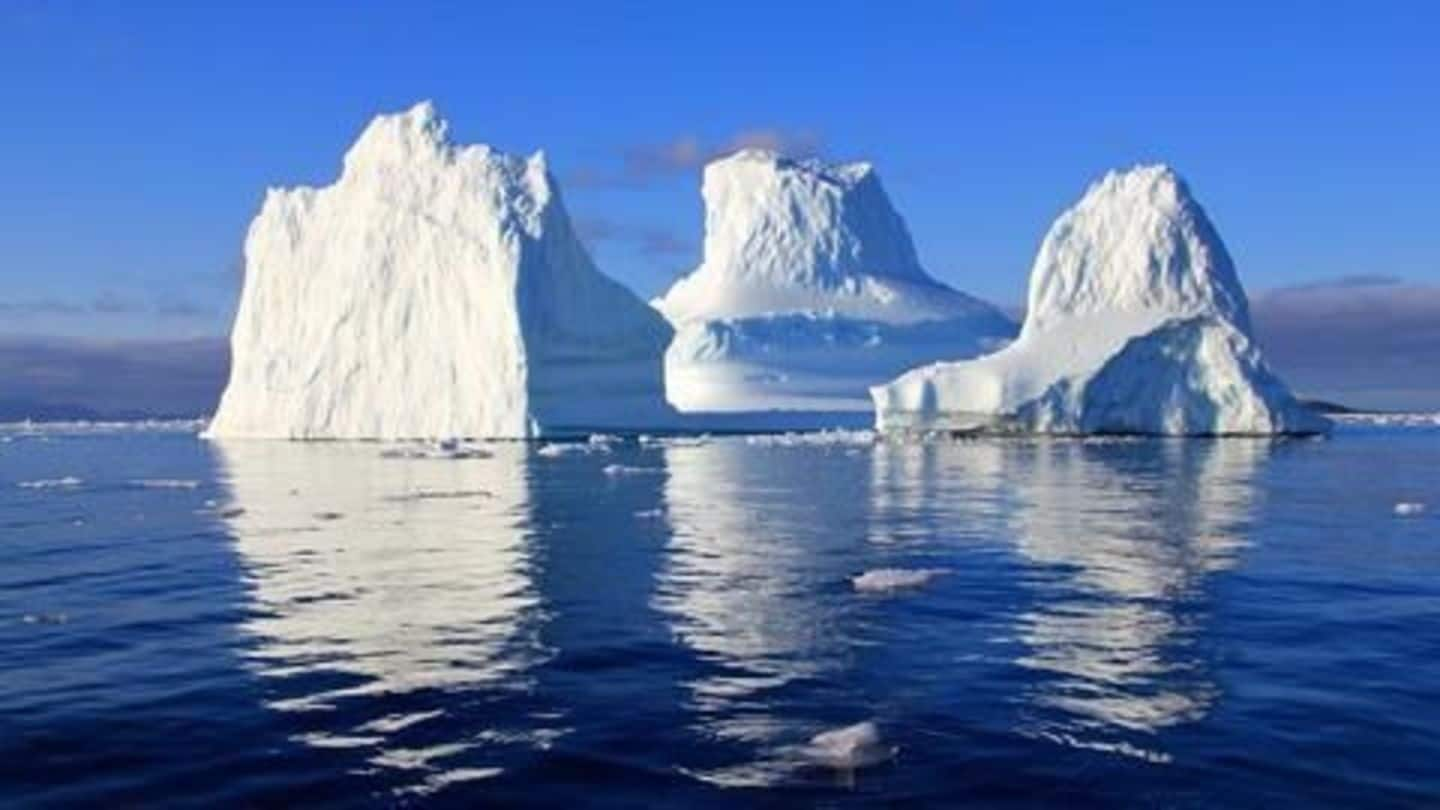
1 trillion ton iceberg breaks off from Antarctica
What's the story
One of the ten biggest icebergs ever recorded by scientists has split off from Antarctica's Larsen C section of the Larsen ice shelf.
Experts have reportedly been expecting the trillion-tonne block to break off "anytime" as it was just "hanging by a thread".
Scientists who analyzed the latest satellite data detected the 6,000-sqkm iceberg adrift in the Weddell Sea.
Here's all about it.
Details
Larsen C ice shelf 10% smaller than before: Scientists
The new berg is the result of a huge crack in the Larsen ice shelf had been developing for over a decade, according to scientists.
An increase of 17km in the crack, the largest since Jan'17, was recorded between 25-31 May 2017.
After the iceberg broke off, the size of the ice shelf decreased by 10% and its shape has also changed.
Information
New berg to be named A68
The new iceberg is likely to be named A68. Though it is believed to be among the ten biggest icebergs, it is only half the size of the record-holding B-15 iceberg, which broke off from Ross ice shelf in 2000.
What now?
Giant iceberg could further break into smaller pieces
Considering the iceberg's size, University of Leeds's Glaciers Satellite Observation Expert, Anna Hogg, said the split off is a "really major event".
Researchers say the "break" wasn't a simple one; data collected before the berg "calved" shows that the crack had multiple branches.
Swansea University's Professor of Glaciology, Adrian Luckman, said the iceberg will break into smaller ones in the future.
Size
How big is the giant berg?
Extending over 6,000 sq km in area, the iceberg is nearly about the size of Delaware (6,452 sq km), four times the size of London (1,572 sq km), twice as big as Luxembourg (2,586 sq km), and quarter the size of Wales (20,761 sq km).
It occupies a volume that is twice the volume of Lake Erie (480 cubic kilometers).